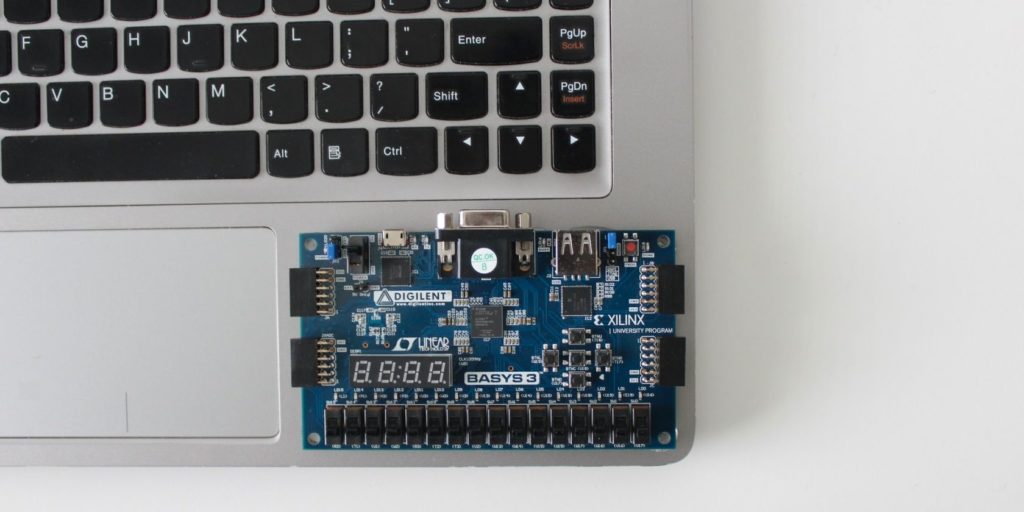FPGAs are essentially programmable chips, with applications in all kinds of specialized computations.
FPGAs provide benefits for different types of electronic equipment. From aircraft navigation to medical ultrasound and data search engines, people rely on the FPGA to develop and use the technology they use on a daily basis.
This article provides information about what an FPGA is and what it is used for. If you are interested in these topics, you will enjoy reading this article.
What is an FPGA?
FPGA is an acronym, which means Programmable array on the portal. It is semiconductor device based on a matrix of configurable logic blocks (CLB), where much of the electrical functionality in the device can be changed by the design engineer.
The FPGA is defined by its set of interconnected digital subcircuits that perform common functions while offering high levels of flexibility. FPGAs belong to a class of devices called programmable logic (or programmable hardware). The FPGA does nothing by itself; rather, it is configured to be any digital circuitry required. So how does it work?
How does the FPGA work?
Understanding how the FPGA works is easy. This involves loading a configuration into the FPGA, which then begins to behave like any circuit you need. No fuss, no stress. His RAM-based configuration means that it can be reconfigured an unlimited number of times.
Types of FPGAs
There are two main ways to classify FPGAs: by their internal arrangement of blocks or by their type of programming technology. FPGAs fall into one of three categories when it comes to their ranking:
-
Symmetric Arrays: This arrangement consists of rows and columns of connected logic blocks surrounded by input / output blocks.
-
Row-based architecture: This arrangement alternates rows of logic blocks and programmable resources to interconnect with input / output blocks at the edges.
-
Hierarchical PLDs (Programmable Logic Devices): They have a more complex layout. The top level consists of logical blocks and interconnections. Logic blocks contain logic modules that have combinatorial and sequential functional elements.
Common use of FGPA
There are countless FPGA applications that cover a wide range of areas. Use cases include:
-
Video and image processing.
-
Military applications.
-
Software defined radio.
-
Medical imaging.
-
Cable and wireless communications.
-
Integration of many simple programmable logic devices.
-
Voice recognition.
-
Cryptography.
-
Digital signal processing.
-
ASIC prototyping.
-
Device controllers.
-
Computer hardware emulation systems.
-
Bioinformatics.
-
High performance calculations.
-
Cosmonautics and defense.
-
ASIC prototyping.
-
Automotive.
-
Consumer electronics.
-
Medical data center.
-
Scientific and industrial instruments.
Advantages of using FPGA
FPGA offers many advantages over conventional implementations.
| Benefits | Details |
|---|---|
| Integration | The more features within the FPGA today (which include embedded processors, I / O at 28 Gbps or more, RAM units, DSP motors), the fewer devices on the board. This increases reliability by reducing the number of device failures. |
| Flexibility | The functionality of the FPGA may change each time the device is turned on. This means that if the design engineer wants to make a change, he can simply download a new configuration file to the device and test the change. |
| Acceleration | FPGAs are marketed faster because they are sold off the shelf. Due to the flexibility of the FPGA, OEMs can ship systems as soon as the design is proven to work and be tested. |
| Long-term availability | Using an FPGA gives you independence from component manufacturers, as the functionality is not in the module itself, but in its configuration. This programming can be done in a way that does not require any adjustments to different FPGAs |
The differences between FPGA and ASIC
ASICs (application-specific integrated circuits) and FPGAs have different value propositions. What distinguishes an FPGA from an ASIC is the fact that the FPGA can be reprogrammed to a desired application or post-production functional requirements, while the ASIC is custom made for specific design tasks. These reprogramming changes can occur during the PCB assembly process or even after sending the equipment to customers.
Although single-programmable (OTP) FPGAs exist, the dominant and most common types are based on RAM, making them reprogrammable as the design continues to evolve.
In addition, FPGAs are sold off the shelf, unlike ASICs, which require production cycles that ultimately take several months.
FPGA performance and versatility
FPGA offers superior levels of performance and flexibility, making them a technology for people and organizations who want to optimize chips or make changes to chips to load them.
A great example of the growing importance of FPGAs can be found in the field of artificial intelligence. As artificial intelligence continues to gain importance, so does the importance of FPGAs. In some cases, FGPAs outperform GPUs (GPUs) in analyzing vast amounts of machine learning data.
Read Next
About the author


